Half of the Navy’s littoral combat ship fleet is suffering from structural defects that have led to hull cracks on several vessels, limiting the speed and sea states in which some ships can operate, according to internal records obtained by Navy Times and confirmed by sea service officials.
The Navy has not previously disclosed the cracks in the Independence-class version of the LCS or the class-wide repercussions of the defects, nor has it identified which ships suffer from the issues.
But documents obtained by Navy Times warn that cracks can grow if the ships transits faster than 15 knots in seas with maximum wave heights of about eight feet.
The troubling revelations come as the Navy continues to grapple with a class-wide transmission issue in the Freedom-class variant of the LCS, and sea service leaders seek to decommission all of those ships, years ahead of the expected end of their service lives.
Naval Sea Systems Command spokesman Alan Baribeau said in a statement that the service first identified “cracks in higher-stress areas of the structure” on Independence-class ships in late 2019, when the problem became apparent on Coronado, the second ship of the class, which was commissioned in 2014.
Such cracks have since been discovered on six of those LCS variants, according to Baribeau, nearly half of the 13-ship Independence class fleet.
RELATED
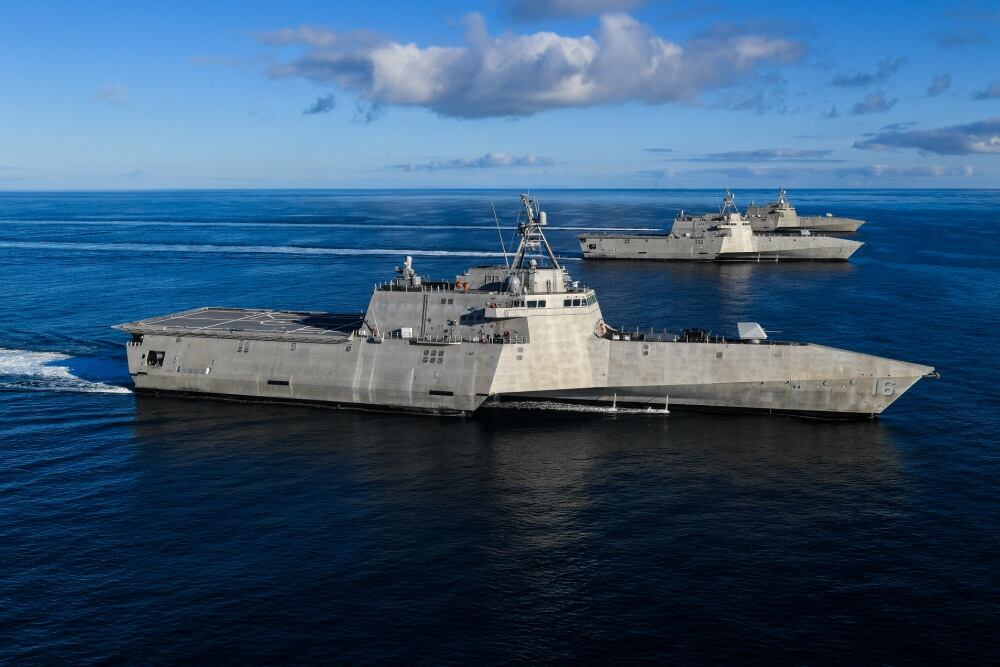
Baribeau said the issue “does not pose a risk to the safety of Sailors on board the ships.”
“Analysis of the bow structure with the combined vertical and lateral loads did not identify any hot spots below the waterline, and this specific detail does not occur below the waterline,” he said.
The shipbuilder, Austal USA, has incorporated a “revised configuration” to hulls still under construction or warrantee, while the Navy is — or will be — fixing the affected in-service ships, according to Baribeau.
“Modification consists of replacing deck plate and shell plate with thicker material, among other actions,” he said.
Baribeau did not specify the nature of those “other actions,” and said an overall cost for fixing all the ships was not available, as “the U.S. Navy’s mitigation plans are being developed as part of each ship’s maintenance and modernization.”
Austal USA referred questions for this report back to the Navy.
Those plate replacement efforts are significant, according to Bradley Martin, a retired surface warfare officer who spent two-thirds of his 30-year career at sea.
“Taking out deck plate and shell plate can’t be done outside a big availability and, if nothing else, it will add to the ship’s weight, which will likely slow it down,” said Martin, now director of Rand’s National Security Supply Chain Institute. “This really looks like a huge, bad deal for this ship class.”
RELATED
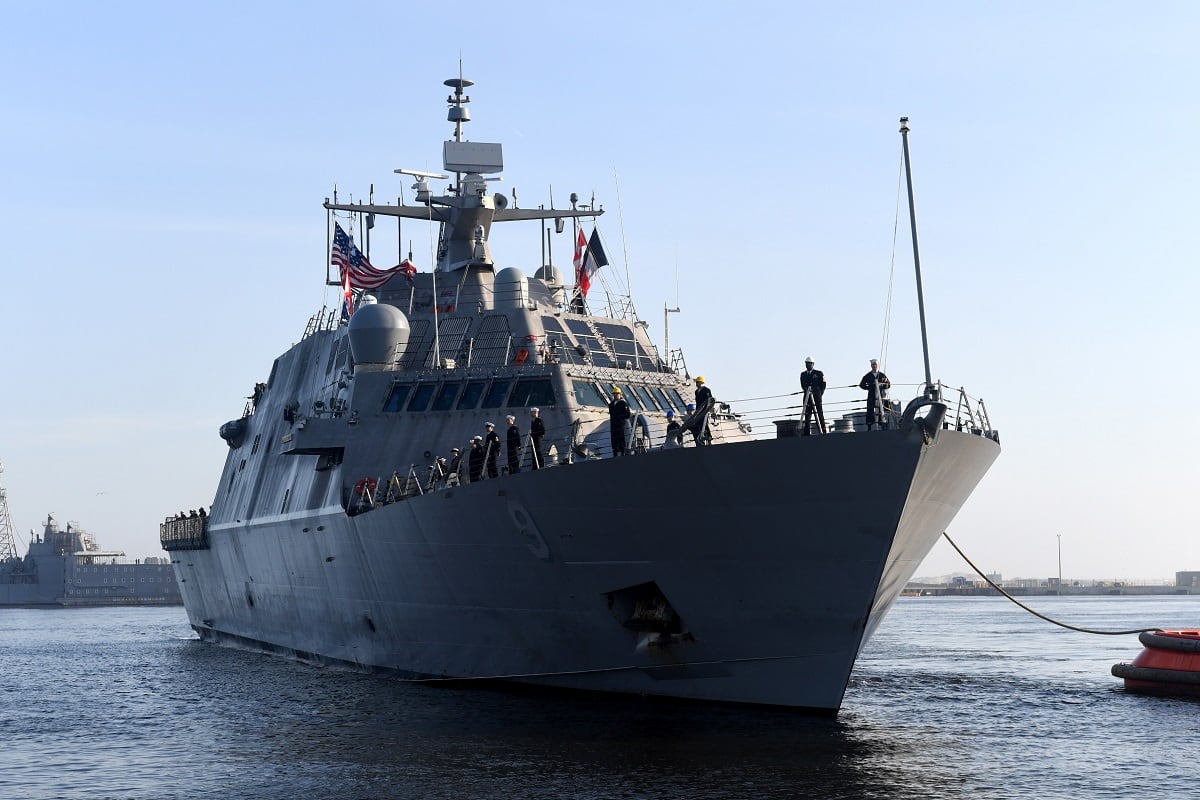
Baribeau did not answer specific questions about crack size or their location on the Independence-class ships, only saying in an email that “crack size and visibility do not impede the ability of Independence-class ships from meeting operational requirements.”
While NAVSEA contends that the crack issue does not hinder the ability of such ships “to get underway and execute missions,” the documents obtained by Navy Times show the problem is limiting how fast ships with afflicted hulls can go and the sea states in which they can operate.
Omaha, a $440 million LCS commissioned in 2018 — which has since been turned into a training vessel — is one of the ships suffering such cracks.
According to a temporary standing order, or TSO, issued by Omaha’s command on July 8, 2021, and obtained by Navy Times, the ship was operating under “speed and sea state restrictions” in order to “limit crack propagation.”
The order prohibited Omaha from traveling faster than 15 knots — 17 mph — in “sea state 4,” a level entailing a maximum wave height of 8.2 feet.
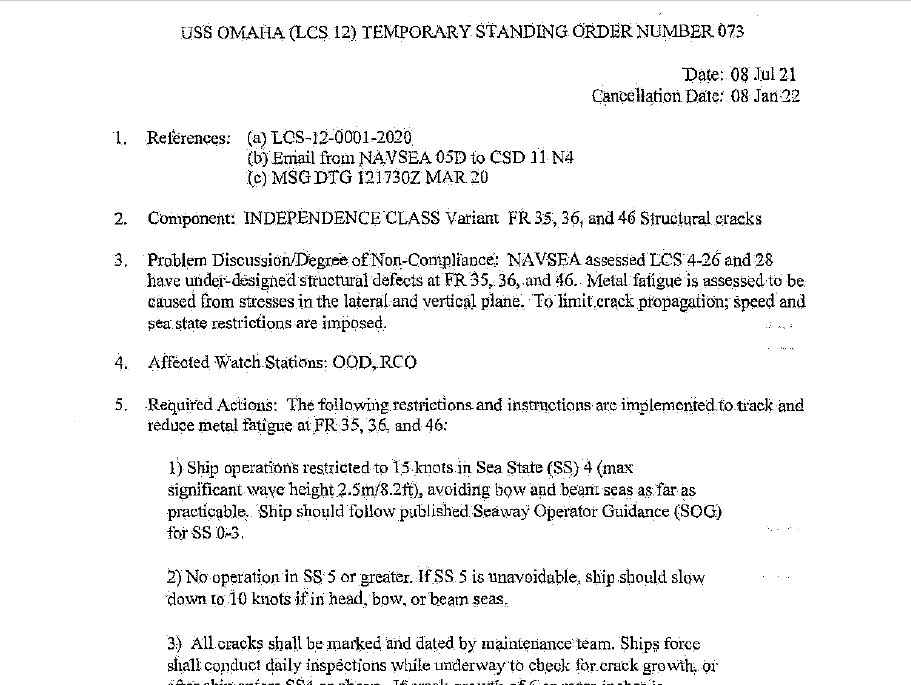
That order also prohibits the ship from operating in any higher sea state.
In other words, the risk of structural cracks means that a ship envisioned as a speedy fleet asset is now limited in speed or rough waters.
Asked whether the entire Independence fleet is under speed and sea state restrictions due to the crack risk, NAVSEA’s Baribeau wrote that “all Independence variant ships have been inspected and are able to meet their operational requirements.”
Asked whether the six ships suffering from hull cracks are operating with those cracks, Baribeau again responded that “all Independence variant ships have been inspected and are able to meet their operational requirements.”
The four-to-eight foot wave range of sea state 4 is “fairly common,” according to Martin, who reviewed the records for Navy Times.
“Being unable to go at speed in sea state 4 is a pretty significant limitation,” he said. “Fifteen knots is a transit speed, a very normal transit speed, less than half of LCS’s supposed maximum speed.”
While NAVSEA states that the crack issue is not hindering operational requirements, a 2021 investigation into Omaha’s command notes that the ship “has more restrictive seakeeping limits due to cracks in her aluminum hull and superstructure,” and that those limitations played a role in hindering a transit from San Diego to Everett, Washington, in November.
RELATED
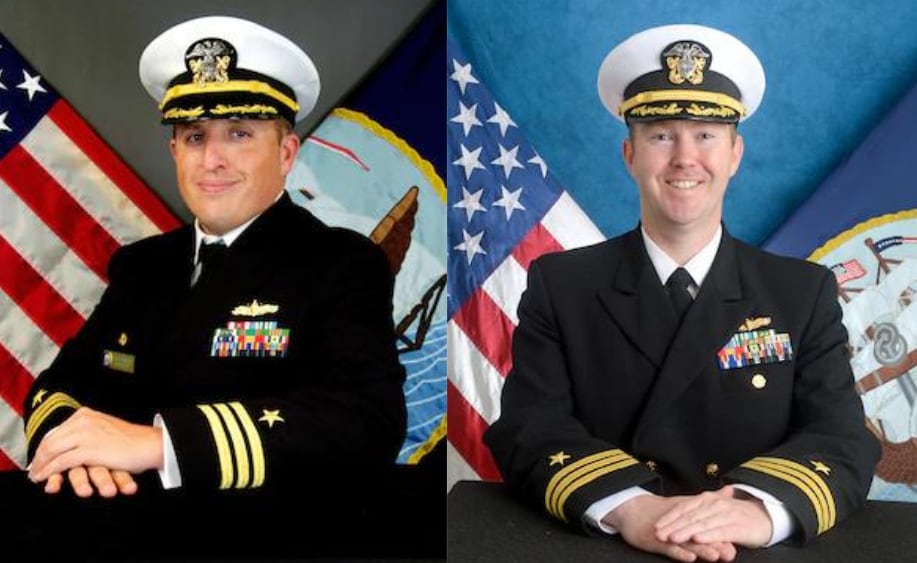
“The original scheduled departure date was in October 2021, and the departure date was modified several times due to the schedule availability of the maintenance yard and ultimately weather and sea conditions in the Pacific Ocean that exceeded OMA seakeeping limits,” the investigation states.
Investigators later wrote that “it is beyond the scope of the investigation to determine whether it would have ultimately been possible for OMA to complete the transit within the limitations specified by the OMA Temporary Standing Order.”

Omaha’s temporary order includes a February 2020 NAVSEA advisory noting that the entire Independence class “have under-designed structural defects” at ship frames 36 and 45.
Frames are attached perpendicularly to the keel, which runs the length of the ship.
Baribeau did not answer questions regarding the location of frames 36 and 45, though ship frame numbering begins at the bow and increases aft.
THE USS OMAHA’S TSO AND NAVSEA ADVISORY
That 2020 alert notes that it applies to the even-numbered Independence-class littoral combat ships, including the pre-commissioned LCS 30, 32 and 34, in addition to the active duty LCS-2 to LCS-26.
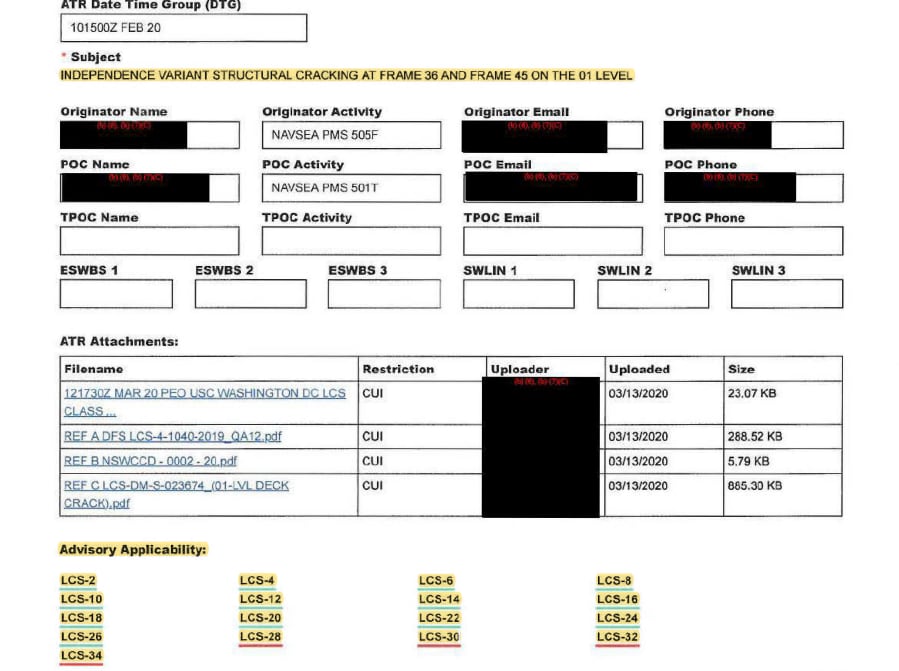
LCS-2, Independence, was later decommissioned in 2021.
Another section of the NAVSEA document states that the office recommends Independence-class ships stay below the 15-knot speed and out of sea states more severe than level four “to limit further crack growth.”
“If a ship encounters seas above sea state 4, ships force will visually inspect the markings for indications of crack growth beyond 6 inches, alert the local technical authority of any change and provide … underway environmental and ship speed data to facilitate analysis of conditions causing crack propagation,” the document states.
RELATED
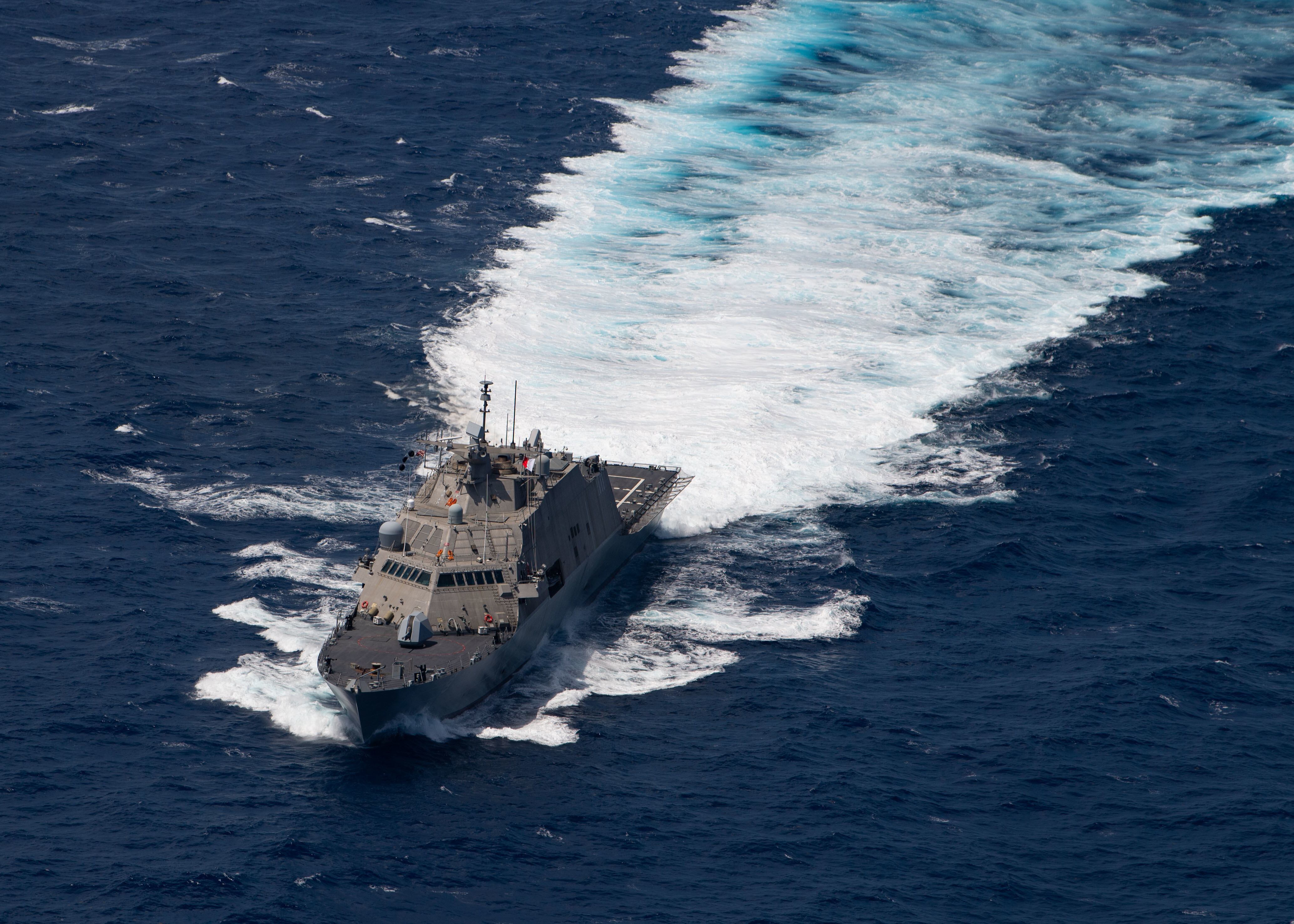
One task in the NAVSEA alert calls for regional maintenance centers to inspect the 01 level at port and starboard for cracks, where “the shell plate vertical flat bar meets the deck between frames 35-36 and 45-46.”
“Clearly mark and date the ends of any cracks so ships force can monitor for crack growth,” the alert prescribes.
After reviewing the TSO and an attached NAVSEA alert for Navy Times, Martin said the records don’t suggest anything catastrophic will occur if an Independence-class LCS steams through rough seas.
“But it does say if you’re going to operate at this speed or sea state, you’re going to have to go into port, mark all the cracks and report it to NAVSEA,” he said. “That could amount to a significant operational limitation. It’s saying you can’t operate in rough weather.”
Martin said a ship class being told to avoid operating in sea state five is “extremely unusual.”
“It doesn’t seem unusual to say ‘divert around it if you can,’” he said. “But it does seem like simply stating, ‘No, you can’t do it,’ is a big deal.”
The Omaha’s TSO regarding hull cracks expired Jan. 8, but the TSO also states it will remain in effect “until Ship’s Design Manager institutes a Class Advisory that includes how to address cracking in the 01 level and all repairs are complete.”
The TSO obtained by Navy Times shows Omaha’s crew was tasked with marking and dating the hull cracks and conducting “daily inspections while underway to check for crack growth, or after ship enters (sea state 4) or above.”
“If crack growth of 6 or more inches is discovered while underway, reduce speed and notify NAVSEA,” the order continues.
If needed, Omaha was allowed to increase its speed to 18 knots during underway replenishments.
But when such evolutions were finished, the crew was ordered to immediately reduce speed to less than 15 knots “and inspect cracking to ensure cracks have not grown by 6 inches or more.”
Cracks in the side shell could be covered with “RTV,” an industrial sealant, “assuming no impact to ability to check for possible crack growth,” the TSO states.
LCS was pitched earlier this century as a fast and agile ship, but it has since struggled to find a mission.
The ships’ modular mission packages have failed to materialize, and the odd-numbered Freedom-class LCS fleet is plagued by a combining gear issue affecting ship propulsion.
RELATED
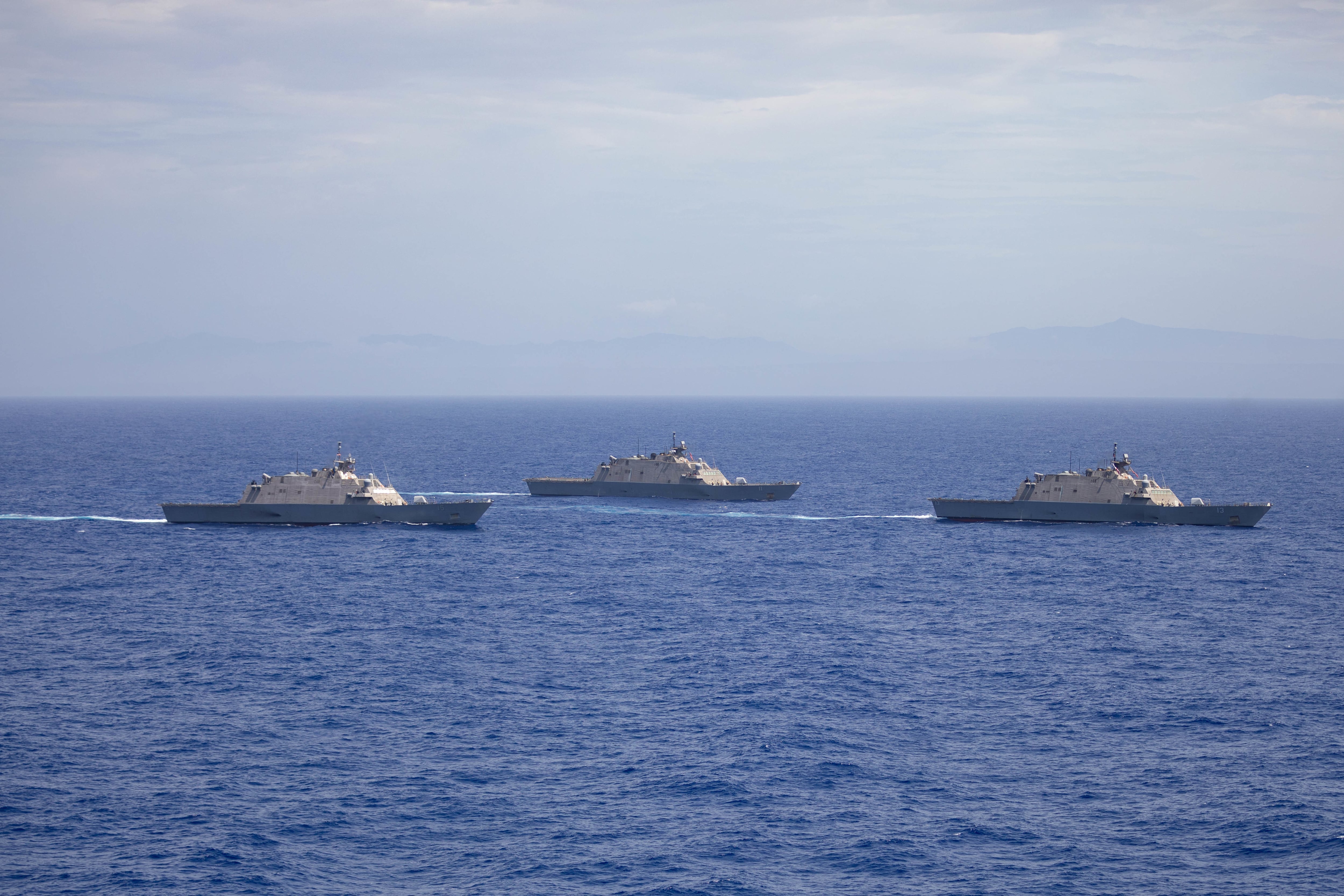
While the Independence and Freedom LCS versions were built with high speed in mind, both classes now appear to be afflicted with problems striking at the heart of that nimbleness.
“A ship that is supposed to be able to go at a high transit speed — based on what I’m seeing here — it can’t in a moderate sea state, and it’s not supposed to be underway at all in what’s defined as a rough sea state,” Martin said. “That means it’s going to be limited in terms of where it can be employed.”
As LCS’s combat vulnerability to China or another conventional military force has become apparent, the Navy has at times used LCS for drug interdiction missions in the Western Hemisphere.
But the structural crack issue suggests that the Independence class might not even be up to that diminished type of mission.
“You get eight-foot seas in the Caribbean or Eastern Pacific,” Martin said. “If the drug interdiction mission required them to go at intercept speeds, they couldn’t do that and comply with this order.”
The fact that both LCS classes have serious problems is “striking,” said Jan van Tol, a retired surface warfare officer and senior fellow at the Center for Strategic and Budgetary Assessments, who also reviewed the documents for Navy Times.
“In LCS-1 … it’s the combining gear problem,” he said. “In LCS-2 it appears to be a structural design problem. If this is the case, then assuming the fixes could be relatively expensive and apply to the entire classes, this raises the difficult question for the Navy whether class fixes are worth the expense and opportunity cost.”
Geoff is the managing editor of Military Times, but he still loves writing stories. He covered Iraq and Afghanistan extensively and was a reporter at the Chicago Tribune. He welcomes any and all kinds of tips at geoffz@militarytimes.com.




